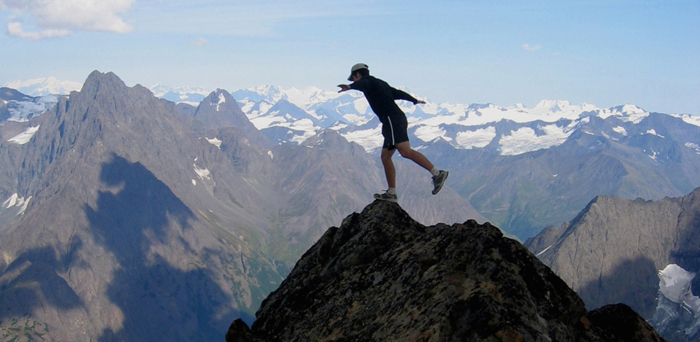The Problem of False Balance in Science Reporting


This article was originally published at The Conversation. The publication contributed the article to Live Science's Expert Voices: Op-Ed & Insights.
How do you know the people billed as science experts that you see, hear and read about in the media are really all that credible? Or have they been included just to create a perception of balance in the coverage of an issue?
It’s a problem for any media and something the BBC’s Trust is trying to address in its latest report on science impartiality in programming.
As part of ongoing training, staff, particularly in non-news programs, were told that impartiality is not just about including a wide range of views on an issue, as this can lead to a “false balance”. This is the process of providing a platform for people whose views do not accord with established or dominant positions simply for the sake of seeming “balanced”.
The BBC has been criticised before for “false balance” and there are reports now that certain climate change sceptics are banned from BBC News, although this is denied by the BBC.
It’s understandable that such false balance could grow from a desire to seem impartial, and particularly so since public broadcasters such as the BBC and the ABC in Australia are sensitive to claims of imbalance or bias.
Couple this with the need to negotiate the difficult ground of expert opinion, authentic balance and audience expectation, not to mention the always delicate tension between the imperatives of news and entertainment, and it hardly seems surprising that mistakes are made. An investigation this year found the ABC breached its own impartiality standards in its Catalyst program last year on statins and heart disease.
Get the world’s most fascinating discoveries delivered straight to your inbox.
Finding the right balance
How then can journalists decide the best way to present a scientific issue to ensure accurate representation of the views of the community of experts? Indeed, how can any of us determine if what we are seeing in the media is balanced or a misrepresentation of expert opinion?
As I have written elsewhere, it is important to not confuse the right to be heard with an imagined right to be taken seriously. If an idea fails to survive in the community of experts, its public profile should diminish in proportion to its failure to generate consensus within that community.
A common reply to this is that science isn’t about consensus, it’s about the truth. This is so, but to use a consensus as evidence of error is fallacious reasoning.
While it’s true that some presently accepted notions have in the past been peripheral, the idea that simply being against the majority view equates to holding your intellectual ground in the best tradition of the enlightenment is ludicrous.
If all views are equal, then all views are worthless.
Were I to propose an idea free of testing or argument, I could not reasonably expect my idea to be as credible as those subject to rigorous experimentation and collaborative review. If such equality did exist then progress would be impossible, since progress is marked by the testing and rejection of ideas.
Defining an expert
In the case of science, this testing is the process of experimentation, data analysis and peer review. So if someone – scientist or otherwise – has not worked and published in an area, then they are not an expert in that area.
The first imperative for a journalist covering any story is to determine exactly in what field the issue best sits and then to seek advice from people who work and publish in that field.
Knowing how the issue fits into the broader picture of scientific investigation is very useful in determining this. It is one of the reasons that good science journalism follows from having journalists with some training in science.
Such a selection process, performed transparently, is an excellent defence against charges of bias.
Avoiding false balance
False balance can also be created by assuming that a person from outside the field (a non-expert) will somehow have a perspective that will shed light on an issue, that the real expert is too “caught up in the details” to be objective.
But suggesting that an expert is naive usually indicates an attempt at discrediting rather than truth seeking. Credibility is more about process than authority, and to be a recognised expert is to work within the process of science.
Also, if a piece of science is being criticised, we should ask if the criticism itself has been published. It’s not enough that someone with apparent authority casts doubt as this is simply an appeal to authority – an appeal that critics of mainstream science themselves use as a warrant to reject consensus.
A second journalistic imperative would be to recognise that not all issues are binary.
The metaphor that a coin has two sides is a powerful one, and the temptation to look at both sides of an issue is naturally strong. But the metaphor also assumes an equal weighting, and that both sides present the same space for discussion.
Proof and evidence
When an issue is genuinely controversial, the burden of proof is shared between opposing views. When a view is not mainstream, say that scientists are engaged in a conspiracy to defraud the public, the burden of proof sits with those promoting that view.
In such cases, as Christopher Hitchens succinctly put it:
What can be asserted without evidence can also be dismissed without evidence.
Attempting to dishonestly shift the burden of proof is a common device in the push to have young earth creationism taught in science classrooms.
The idea of “teaching both sides” or that students should be allowed to make up their own minds seems again like a recourse to the most basic ideas of a liberal education, but is in reality an attempt to bypass expert consensus, to offload the burden of proof rather than own it.
The fact is, that for issues such as creationism, vaccination and that climate change is occurring and is a function of human activity, it’s not about journalists suppressing views, it’s about quality control of information.
Stay with the issue
A classic means of muddying the waters is to employ straw man arguments, in which the point at issue is changed to one more easily defended or better suited to a particular interest. Politicians are adept at doing this, dodging hard questions with statements like “the real issue is” or “what’s important to people is”.
An expert versus who?
Deniers of climate science often change the issue from global warming to whether or not consensus is grounds for acceptance (it alone is not, of course), or focus on whether a particular person is credible rather than discuss the literature at large.
The anti-vaccine lobby talks about “choice” rather than efficacy of health care. Young earth creationists talk about the right to express all views rather than engage with the science. Politicians talk about anything except the question they were asked.
The third imperative, therefore, is to be very clear as to what the article or interview is about and stick to that topic. Moving off topic negates the presence of the experts (the desired effect) and gives unsubstantiated claims prominence.
The impartiality checklist
The best method of dealing with cranks, conspiracy theorists, ideologues and those with a vested interest in a particular outcome is the best method for science reporting in general:
- insist on expertise
- recognise where the burden of proof sits
- stay focused on the point at issue.
If the media sticks to these three simple rules when covering science issues, impartiality and balance can be justifiably asserted.
Correction: This article was amended on July 17, 2014 to include a report of the BBC’s denial that a climate change sceptic was banned from the public broadcaster.
Peter Ellerton does not work for, consult to, own shares in or receive funding from any company or organisation that would benefit from this article, and has no relevant affiliations.
This article was originally published on The Conversation. Read the original article. Follow all of the Expert Voices issues and debates — and become part of the discussion — on Facebook, Twitter and Google +. The views expressed are those of the author and do not necessarily reflect the views of the publisher. This version of the article was originally published on Live Science.





